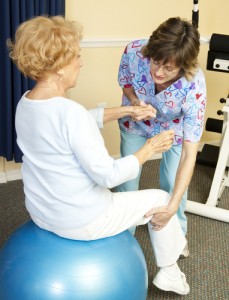 A new review entitled “Determinants and outcomes of physical activity in patients with COPD: a systematic review” summarizes data from recent studies on the role of physical activity in patient outcomes affected with chronic obstructive pulmonary disease. The review was published in the journal Thorax.
A new review entitled “Determinants and outcomes of physical activity in patients with COPD: a systematic review” summarizes data from recent studies on the role of physical activity in patient outcomes affected with chronic obstructive pulmonary disease. The review was published in the journal Thorax.
Chronic obstructive pulmonary disease (COPD) is a type of lung disease that is characterized by impaired lung airflow that leads to progressively worse symptoms which escalate over time. It represents a serious challenge to health public services, since it requires long-term care. For patients with COPD, reduced exercise capacity leads to inactivity and consequently, depression and anxiety. Thus, while it is recognized that physical activity is significant for COPD patients, is important to understand how different activity levels impacts on the determinants and outcomes of the disease.
In this study, the authors performed a comprehensive review of the most-recent literature reporting the effect of physical activity in COPD patients’ outcomes and determinants. They performed a systematic search of studies published until November, 2012 using four different publication databases: Medline, Embase, CINAHL and Psychinfo. The selection was independently performed by a team of two reviewers that included 86 studies. From the pool of selected articles, 59 reported the role of physical activity in COPD determinants – defined as any factor that impacts on the health status – 23 on patients’ outcomes and 4 studies included both determinants and outcomes.
[adrotate group=”3″]
The authors found the majority of the studies included the role of determinants, such as clinical, functional, socio-demographic and lifestyle factors in the physical activity of COPD patients. However, while these were consistently related to physical activity, the authors found the evidence is weak and of poor quality. An important feature for COPD patients is also how current pharmacological and non-pharmacological therapeutics impact patients’ physical activity as well. The studies evaluating these features were equally considered inconsistent and lacking good-quality evidence. As for outcomes, diminished physical activity was associated with COPD exacerbations and mortality, with reporting studies presenting the best available evidence. Additionally, other outcomes reported included dyspnea, quality of life and exercise capacity and Forced Expiratory Volume (FEV1, which indicates the maximal amount of air a patient can forcefully exhale in one second), however, the evidence was also poor.
The authors conclude that there is a need to adopt and perform high-quality studies to determine the effects of physical activity in COPD pathogenesis. These should include longitudinal studies, in detriment of cross-sectional, and randomized trials.

